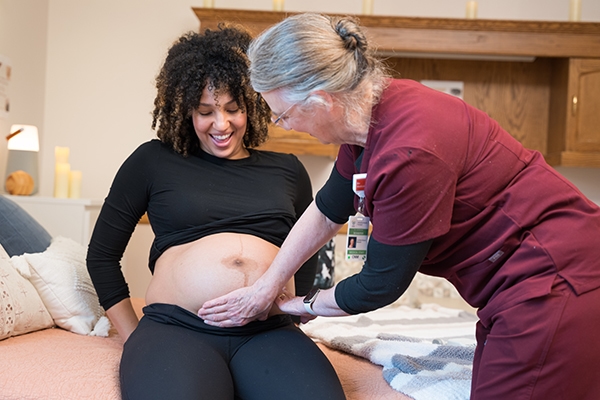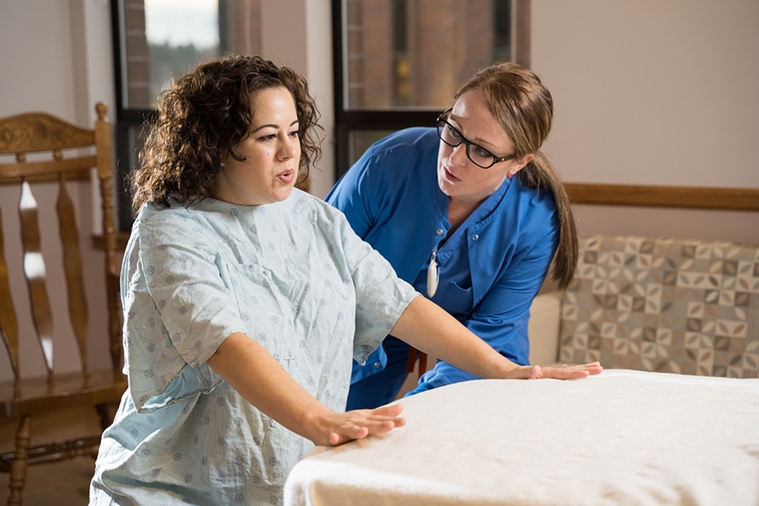Pain Management During Labor
Your options for coping with or without medications
It’s hard to know what level of pain to expect during labor and birth, especially your first time. And even if you’ve delivered before, pain can vary from one baby to the next.
Our goal is to support you in whatever pain management or labor coping methods work best for you. Our certified nurse-midwives can help low-risk patients with an unmedicated delivery in one of our midwifery suites, or you may deliver in a traditional labor and delivery room with access to pain medications.
Coping without medications
There are many options to cope with labor for those who want to avoid using medications, including:
- Breathing:Allowing your body to direct its own breathing can help you cope with labor.
- Position changes:Your provider may encourage you to change positions which can provide some relief.
- Walking:In an unmedicated delivery, you’ll be able to walk, stand, sit or lean on a partner during or between contractions.
- Labor tub or shower:Warm water can be very soothing during labor and aid you in releasing tension.
- Cold or warm compresses:Temperature variation in the form of cool and warm compresses can help provide relief during labor and after delivery.
- Massage:Consider massage or counter-pressure from a birth partner or doula during labor.
If you’re interested in learning about unmedicated deliveries in ourmidwifery suitesor in a traditional labor suite, consider signing up for theUnderstanding Natural Childbirth Techniques online classfor more information on coping with labor. Your midwife can also give you more information about coping with labor and what to expect.
Nitrous oxide
Nitrous oxide is a tasteless, odorless gas that usually decreases the sensation of pain and anxiety when inhaled. Also called “laughing gas,” it is commonly used in dental offices, operating rooms and labor and delivery units.
Nitrous oxide is available for patients in both our midwifery suites and our labor and delivery rooms. Talk to your provider if you’re interested in tryingnitrous oxide.
Medication options for labor and delivery
If you’re delivering in one of our traditional labor and delivery suites, you’ll have access to anesthesia for pain management. Your options include:
- Epidural: Administered by a member of the anesthesia team, an epidural is a line placed in your lower back (using a needle) that numbs the lower body. Once an epidural is placed, you will not be able to get out of bed and may need to have a catheter to empty your bladder.
- Pain medications:You may receive pain medications via an IV line in your arm during labor. These may include narcotics (opioids) that allow you to relax more between contractions.
Spinal:If you have a planned C-section, you’ll typically be given lower-body numbing through a single spinal injection administered by an anesthesiologist. Like an epidural, this means you won’t be able to get out of bed for a few hours and may need a catheter. Unlike an epidural, this doesn’t involve a line placed in your back.
After baby arrives
Once baby arrives, you may still need various pain relief options as your body begins to heal from delivery. If you’ve had an unmedicated delivery and need stitches immediately afterward, you will receive a numbing local block before your tear is repaired.
While you’re in the Family Birth Place, let your nurse or provider know what pain levels you are experiencing. They can adjust your pain management based on your needs.
If you’ve had a C-section, your care team will pay special attention to your incision and help you manage pain you’re experiencing. This may include prescription medication to take home with you.


